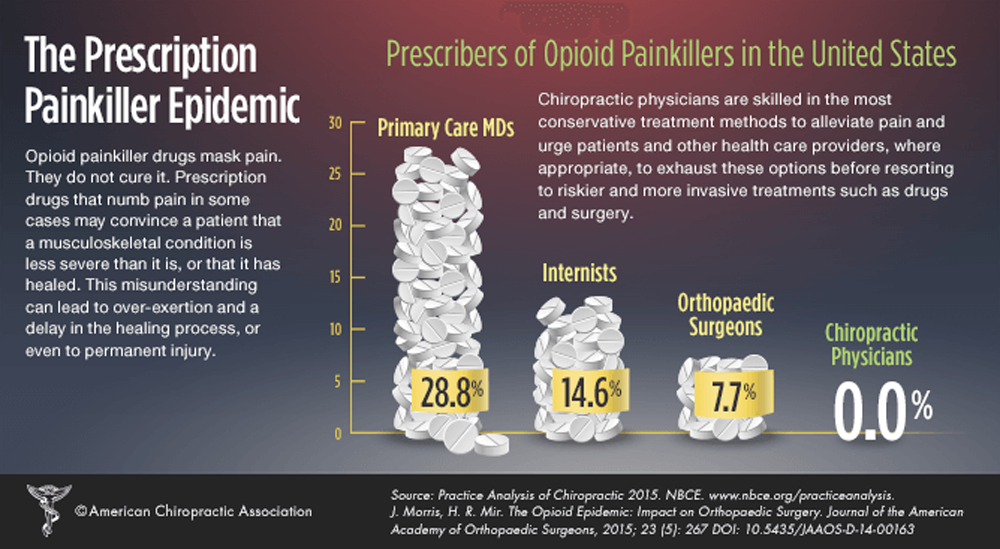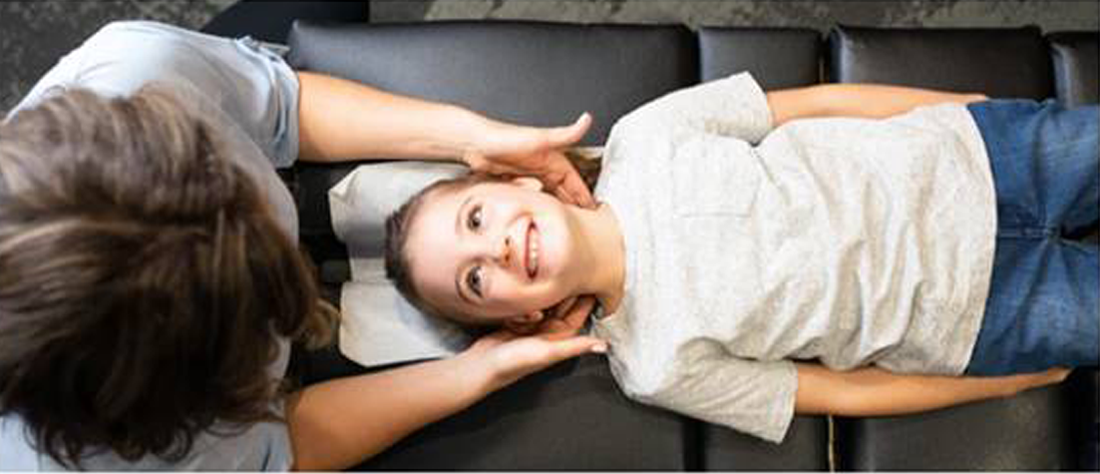Association Between Chiropractic Use and Opioid Receipt Among Patients with Spinal Pain: A Systematic Review and Meta-analysis
SOURCE: Pain Medicine 2019 (Sep 27) [Epub]
Kelsey L Corcoran, DC, Lori A Bastian, MD, Craig G Gunderson, MD, Catherine Steffens, Alexandria Brackett, MA, MLIS, Anthony J Lisi, DC
Kelsey L. Corcoran, DC,
Yale Center for Medical Informatics,
300 George St., Suite 501,
New Haven, CT 06511, USA.
OBJECTIVE: To investigate the current evidence to determine if there is an association between chiropractic use and opioid receipt.
DESIGN: Systematic review and meta-analysis.
METHODS: The protocol for this review was registered on PROSPERO (CRD42018095128). The MEDLINE, PubMed, EMBASE, AMED, CINAHL, and Web of Science databases were searched for relevant articles from database inception through April 18, 2018. Controlled studies, cohort studies, and case-control studies including adults with noncancer pain were eligible for inclusion. Studies reporting opioid receipt for both subjects who used chiropractic care and nonusers were included. Data extraction and risk of bias assessment were completed independently by pairs of reviewers. Meta-analysis was performed and presented as an odds ratio with 95% confidence interval.
RESULTS: In all, 874 articles were identified. After detailed selection, 26 articles were reviewed in full, and six met the inclusion criteria. Five studies focused on back pain and one on neck pain. The prevalence of chiropractic care among patients with spinal pain varied between 11.3% and 51.3%. The proportion of patients receiving an opioid prescription was lower for chiropractic users (range = 12.3–57.6%) than nonusers (range = 31.2–65.9%). In a random-effects analysis, chiropractic users had a 64% lower odds of receiving an opioid prescription than nonusers (odds ratio = 0.36, 95% confidence interval = 0.30–0.43, P < 0.001, I2 = 92.8%).
There are more articles like this @ our:
CONCLUSIONS: This review demonstrated an inverse association between chiropractic use and opioid receipt among patients with spinal pain. Further research is warranted to assess this association and the implications it may have for case management strategies to decrease opioid use.
KEYWORDS: Analgesic; Chiropractic; Low Back Pain; Meta-analysis; Neck Pain; Opioid; Systematic Review
(Reuters Health) – People with chronic back and neck pain who receive chiropractic care may be less likely to use opioid painkillers, a research review suggests. Researchers examined data from six previously-published smaller studies with a total of more than 62,000 participants with spinal pain. Across all of the studies, 11% to 51% of the patients used chiropractic care. People who saw a chiropractor were 64% less likely to use opioids than people who didn’t, researchers report in the journal Pain Medicine. “Patients with spinal pain who visit a chiropractor may receive treatments such as spinal manipulation, massage, acupuncture, exercises and education as appropriate,” said lead author Kelsey Corcoran of Yale School of Medicine in New Haven, Connecticut. “These therapies may lead to decreased pain, improved range of motion and increased function,” Corcoran said by email. “If a patient’s pain is well controlled by the treatment they received from a chiropractor, they may subsequently need less pain medications or even none at all.” |
From the Full-Text Article:
Introduction
Since the release of the Centers of Disease Control and Prevention’s guidelines for prescribing opioids for chronic pain in 2016, certain opioid prescribing rates have declined. [1, 2] This includes the rates of highdosage prescriptions (≥90 morphine equivalent milligrams per day) and overall opioid prescribing. [1] Although this trend is favorable, preventing opioid addiction and overdose still remain a significant public health priority. [3] In 2017 alone, an average 115 Americans died daily from opioid overdose. [4]
Overdose deaths from opioids are correlated with prescribing patterns and legal sales. [5–8] Therefore, one component of addressing the opioid epidemic is the effective utilization of nonpharmacological therapies as frontline treatment options to avoid the prescription of opioids and the potential harms associated with their use. [2] Current clinical practice guidelines for the management of low back pain (LBP), neck pain, and osteoarthritis of the hip, knee, and hand recommend specific nonpharmacological treatments as initial considerations ahead of pharmacological treatment. [9–12]
Chiropractors provide many of the nonpharmacological treatments recommended by clinical practice guidelines for spinal pain, including spinal manipulation, patient education, exercise, acupuncture, and massage. [13–15] Chiropractors do not prescribe opioids; therefore, patients would never receive opioid prescriptions as part of a chiropractic treatment plan. Yet it is unknown whether patients who receive chiropractic care are less likely to receive an opioid prescription from any provider for a given complaint. Recent work from the Veterans Health Administration (VHA) demonstrated that veterans who utilized VHA chiropractic services had a decreased likelihood of receiving an opioid after an initial chiropractic visit than before the visit. [16]
This project was a systematic review and meta-analysis to investigate the current evidence and determine if there is an association between chiropractic use and opioid receipt. To date, no review has assessed for such an association.
Read the rest of this Full Text article now!







Leave A Comment